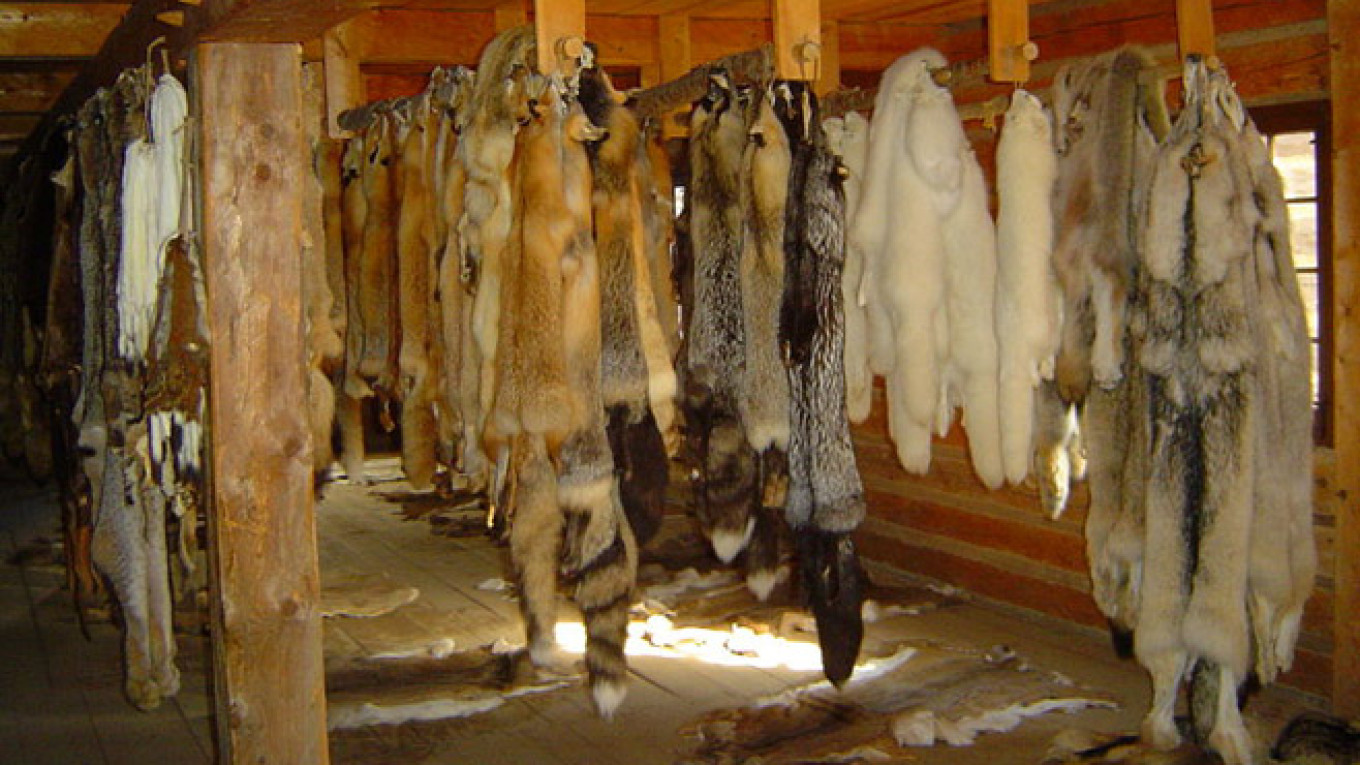Bringing a high-tech touch to a thousand-year-old industry, the Customs Union of Russia, Belarus and Kazakhstan proposed the attachment of radio-frequency identification tags to all fur imports.
Up to 80 percent of Russian fur imports are undeclared or under-declared, according to a study conducted by the Higher School of Economics, or HSE, and lobby group Retail Companies Association. Alyona Orlova, a spokeswoman for fur producer Moskovskaya Mekhovaya Kompaniya, or MMK, said that up to half of Russian furs may be contraband.
A pilot project aimed at tracking imported furs is set to launch in 2015, according to a decree posted on the Eurasian Economic Commission's website.
"The system is to protect entrepreneurs working within the legal field from gray imports," a commission representative, who declined to be identified, told The Moscow Times by telephone Thursday.
Russia imported $360 million worth of fur and fur clothing in 2012, according to the HSE study. During the reporting period, Russia imported seven times more furs than it sold abroad.
The situation is unusual for Russia, which has been a major fur exporter since the time of Kievan Rus. However, the country lost its position in the global fur market after the demise of the Soviet Union, which led to the breakdown of the fur farming industry and mass farm closures.
"We would definitely benefit from RFID tagging of the imports," Orlova said. MMK manufactures its clothing in Russia, but uses high-end fur purchased abroad, mostly in Northern Europe.
Illegal importers often utilize subpar fur, Orlova said. For example, Chinese fur is sometimes dipped in formaldehyde, which causes an increase in size, she explained, adding that this particular practice lacks any benefit in terms of the long-term wearability of an item, or to the owner's health.
Tricks such as these allow smuggled furs to be sold at half the price of legal products, she said. As a point of reference, legally produced mink coats generally sell for about 100,000 rubles ($2,910).
It is too early to say how much the RFID tagging program would cost, the commission representative said, adding that a working group is being set up to outline the program.
An RFID reader generally costs between 100,000 and 250,000 rubles ($2,910 to $7,290), while wholesale prices for the chips themselves can stand at a mere 5 rubles ($0.14) each, RBC Daily reported Thursday, citing a chip making company.
Contact the author at a.eremenko@imedia.ru
A Message from The Moscow Times:
Dear readers,
We are facing unprecedented challenges. Russia's Prosecutor General's Office has designated The Moscow Times as an "undesirable" organization, criminalizing our work and putting our staff at risk of prosecution. This follows our earlier unjust labeling as a "foreign agent."
These actions are direct attempts to silence independent journalism in Russia. The authorities claim our work "discredits the decisions of the Russian leadership." We see things differently: we strive to provide accurate, unbiased reporting on Russia.
We, the journalists of The Moscow Times, refuse to be silenced. But to continue our work, we need your help.
Your support, no matter how small, makes a world of difference. If you can, please support us monthly starting from just $2. It's quick to set up, and every contribution makes a significant impact.
By supporting The Moscow Times, you're defending open, independent journalism in the face of repression. Thank you for standing with us.
Remind me later.


